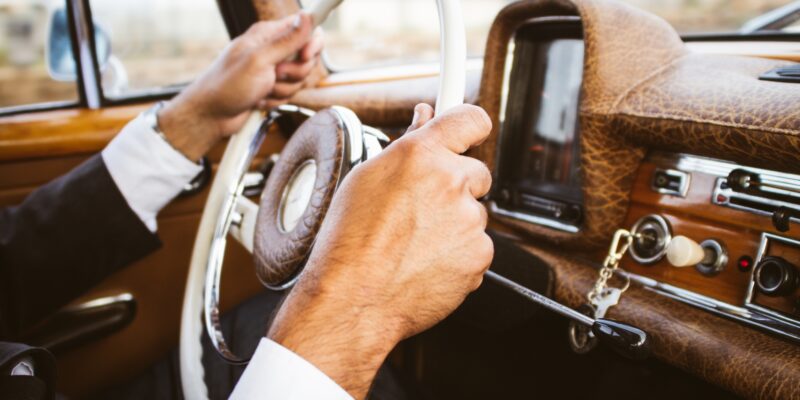Breathing New Life into Vintage Beauties: A DIY Guide
Classic cars are more than just vehicles; they’re a piece of history, a glimpse into the past, and a testament to automotive craftsmanship. And restoring these vintage beauties to their former glory is not just a hobby; it’s a passion and a labor of love. It’s about sourcing period-correct parts, recreating original paint colors, and reviving the interiors with materials true to the car’s era. The goal, ultimately, is not just to make these cars look good but to make them feel alive again.
In this blog post, we’ll dive into the world of classic car restoration, exploring the steps to preserving automotive history, one car at a time.
How to tackle the restoration process
For those who immerse themselves in the world of classic car restoration, the journey is a constant reminder that the past can be beautifully revived in the present.
It takes a discerning eye to appreciate the graceful lines of a ’57 Chevy Bel Air, the roaring power of a Ford Mustang from the ’60s, or the timeless elegance of a Jaguar E-Type. Restorers aren’t just fixing up old cars; they’re reviving the spirit of an age gone by.
In pursuit of this, you need to meticulously research the historical context of the car you’re restoring. Dive into archives, seek out original blueprints and documents, and interview those who may have lived during the car’s heyday.
However, the process of restoration often begins with finding the right car, one that speaks to the restorer on a personal level. Whether it’s a muscle car from the ’60s, a vintage European sports car, or a classic American cruiser, each has its unique appeal.
The Restoration Process: A Labor of Love
Restoring a classic car is no small feat. It’s a journey that involves dedication, patience, and a deep understanding of automotive mechanics and craftsmanship. The process typically includes:
- Initial Assessment: Evaluating the car’s condition and creating a restoration plan, setting goals for the project.
- Dismantling: Carefully taking the car apart, documenting every detail, and preserving original parts whenever possible.
- Bodywork: Addressing rust, dents, and other imperfections in the car’s body, often requiring extensive metalwork and refinishing.
- Mechanical Restoration: Overhauling the engine, transmission, suspension, and brakes to ensure optimal performance.
- Interior Restoration: Refurbishing or recreating the interior, from seats and upholstery to the dashboard and instruments.
- Paint and Finish: Applying the perfect coat of paint, often matching the original color, and ensuring a flawless finish.
- Assembly and Testing: Reassembling the car, double-checking every component, and conducting rigorous testing to ensure it’s roadworthy.
Key considerations for restoring vintage beauties
Car part challenges
Classic car restoration is not without its challenges. Finding rare or discontinued car parts, such as headlights or trim pieces, can be a daunting task, and often the biggest hurdle to completing a restoration in time.
Skilled craftsmen and artisans who can replicate the original details are now in high demand because of this. So, expect your patience to be tested when unexpected issues arise during the restoration process.
When dealing with discontinued parts, classic car enthusiasts and restorers often turn to several alternatives, such as aftermarket parts suppliers, salvage yards, and specialty shops that specialize in refurbishing or recreating hard-to-find components.
Additionally, online communities and forums dedicated to specific car models can be valuable resources for locating discontinued parts and finding solutions for restoring vintage vehicles.
Preserving the history
Each restored classic car is a piece of automotive history that’s been salvaged from the automotive graveyard. As newer and more advanced models come into play, these vintage beauties stand as cherished relics of a simpler yet elegant time in automotive history.
It’s important to preserve these models, maintaining the condition and authenticity that make them unique. In doing so, we ensure that future generations can continue to appreciate and learn from these automotive gems, understanding the roots from which the modern cars of today have grown.
Passion fuels the journey
At the heart of classic car restoration is passion. Enthusiasts pour countless hours and resources into these projects because they genuinely love and respect these vintage vehicles.
It’s a hobby that brings together people from all walks of life who share a common love for automotive history and a commitment to preserving it. While the cars themselves are undeniably the stars of the show, it’s the camaraderie among enthusiasts, the exchange of knowledge, and the shared passion that truly make the world of classic car restoration special.
Honoring the legacy of vintage beauties
Restoring classic cars is not just about reviving old vehicles; it’s about keeping a piece of automotive heritage alive. Enthusiasts are drawn to the character, elegance, and timeless design of these vintage automobiles, but maybe even more so to the challenge. If you can revel in the meticulous restoration process as much as the joy of that first ride down the open road, then you’re in for a memorable, and rewarding experience!
Have you ever completed a vintage car restoration? Share your experience with our automotive community! Considering undertaking one? Watch the video below for some helpful insights on restoring your first classic car!
















